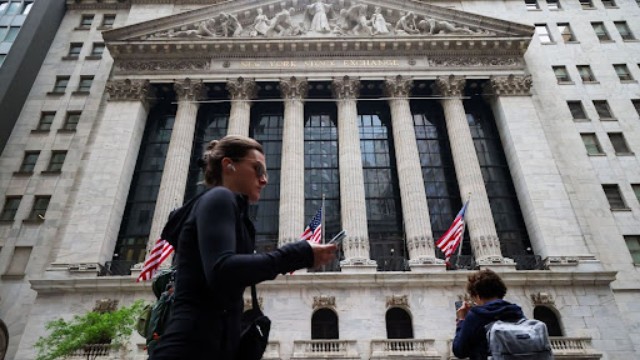
Federal Reserve Chair Jerome Powell made an announcement regarding interest rates at the New York Stock Exchange in New York City, as reported by Reuters.
U.S. exchange-traded funds (ETFs) focused on dividend-paying stocks have experienced a wave of investor interest following the Federal Reserve's recent decision to cut interest rates. In September, the same month the Fed reduced rates by 50 basis points for the first time since 2020, 135 dividend ETFs tracked by Morningstar attracted $3.05 billion in investments. This is a significant increase compared to the average monthly inflow of $424 million from the first eight months of 2024.
Investors are turning to these ETFs as they look for ways to secure consistent income, especially since the Fed’s rate-cutting cycle is expected to push yields down in the future. Dividend-paying stocks offer a stable source of income, making them appealing to those searching for alternatives to bonds, which may see lower returns as interest rates fall further.
Nick Kalivas, who leads factor and equity ETF strategy at Invesco, explained that the shift in monetary policy has prompted investors to seek new places for their money, with dividend stocks being one of the main beneficiaries. However, whether this trend will continue remains uncertain. Recent increases in 10-year Treasury yields and strong U.S. employment data suggest the economy is still robust, potentially slowing down any further large rate cuts by the Fed.
Josh Strange, the founder of Good Life Financial Advisors of NOVA, noted that the interest in dividend-paying stocks is not just a result of the Fed’s actions but also a reaction to high valuations in certain sectors, particularly technology. The S&P 500, currently valued at 21.5 times future 12-month earnings, is near its highest level in three years and far above its long-term average of 15.7. Many of these elevated valuations are driven by just a handful of companies, primarily in the tech sector, which has seen a surge in AI-related investments.
Dividend ETFs, in contrast, offer yields ranging from just under 2% to 3.6%, depending on their strategy. While still lower than the highest Treasury yields, they provide a stable income stream. Popular sectors within dividend ETFs include energy and financials, with companies like Chevron, JP Morgan Chase, and Exxon Mobil frequently featured. Other notable sectors include utilities, with firms like Verizon and Southern Co., and retailers such as Home Depot.
Sean O'Hara, president of Pacer ETFs, emphasized the importance of balancing high dividend payouts with growth potential. He noted that investors should look for companies that not only offer high dividends but are also financially stable enough to continue increasing those payouts. To reduce the risk of holding companies with weak financials, Pacer builds its ETF portfolios based on free cash flow. Pacer’s U.S. Cash Cows ETF, launched in 2016, focuses on this approach and has gained $7.1 billion in inflows over the last year.
While dividend ETFs continue to gain traction, future market conditions, especially rising Treasury yields, could influence whether this momentum is sustained.















